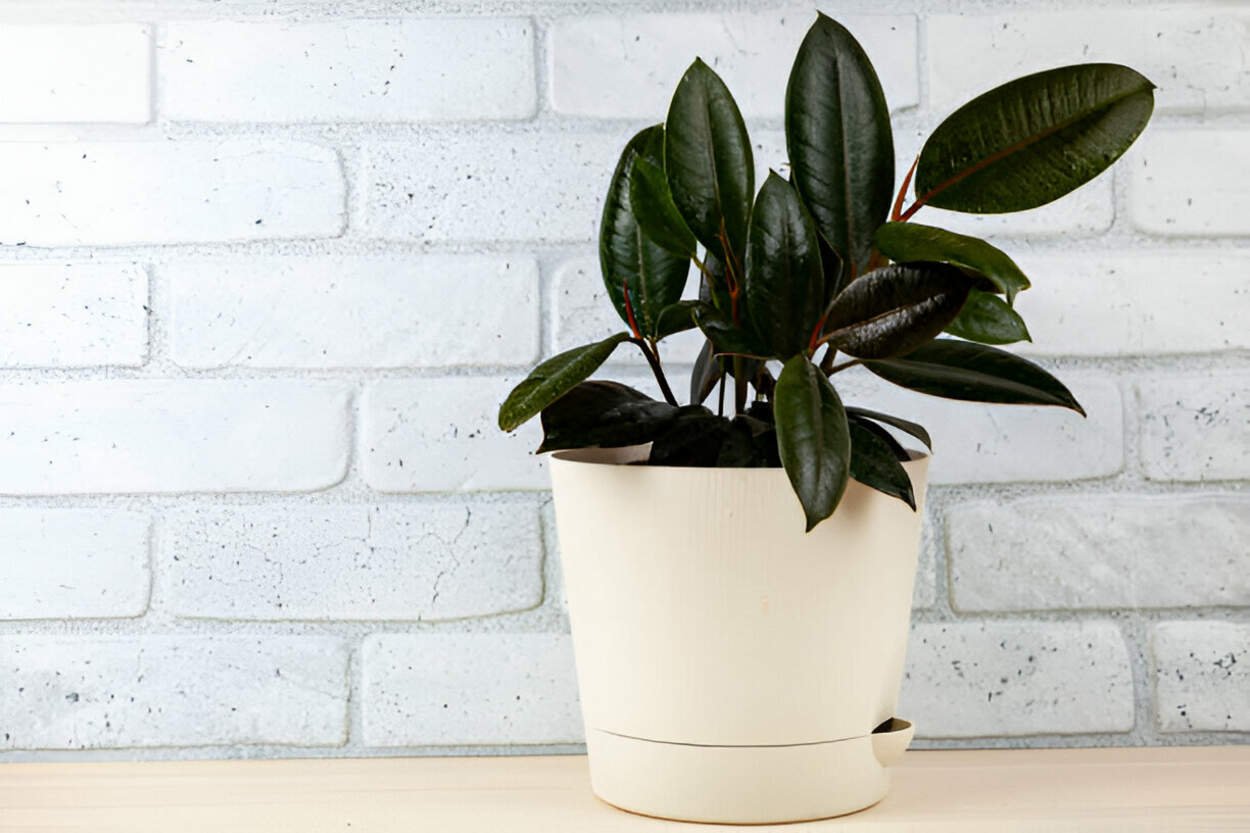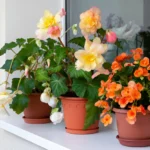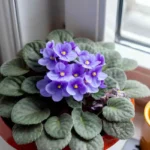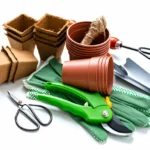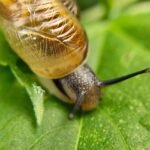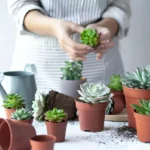Need help finding low-maintenance plants to keep at home? If you are looking for a challenging and hardy type of plant, then start with a rubber plant. I have two at home, one with black leaves and the other with cream and light pink variegation. They have been with me for a long time, and I like to spend time and talk with them.
This article will cover how I care for rubber plants and how to keep them healthy.
The Rubber Plant
They are well-known as houseplants due to their shiny, firm leaves and low maintenance. Their scientific name is Ficus elastica. There are several varieties of rubber plants, each with beautiful leaves that will amaze you. Rubber plants grow tall in nursery tubs if you don’t stem them. Many call them rubber bush, rubber plant, Indian plant, or rubber fig.
Rubber Plant History
The rubber plant is native and tropical to the Asian continent. Let’s describe it in more detail. In that case, it is a permanent immigrant from Southeast Asia, Indonesia, South China, Myanmar, Bhutan, and East India. It is also a tropical plant in over twenty other countries, including Hawaii and the West Indies. In India, people manipulate tree roots for living bridges. Rubber is also made from the bark of the rubber tree.
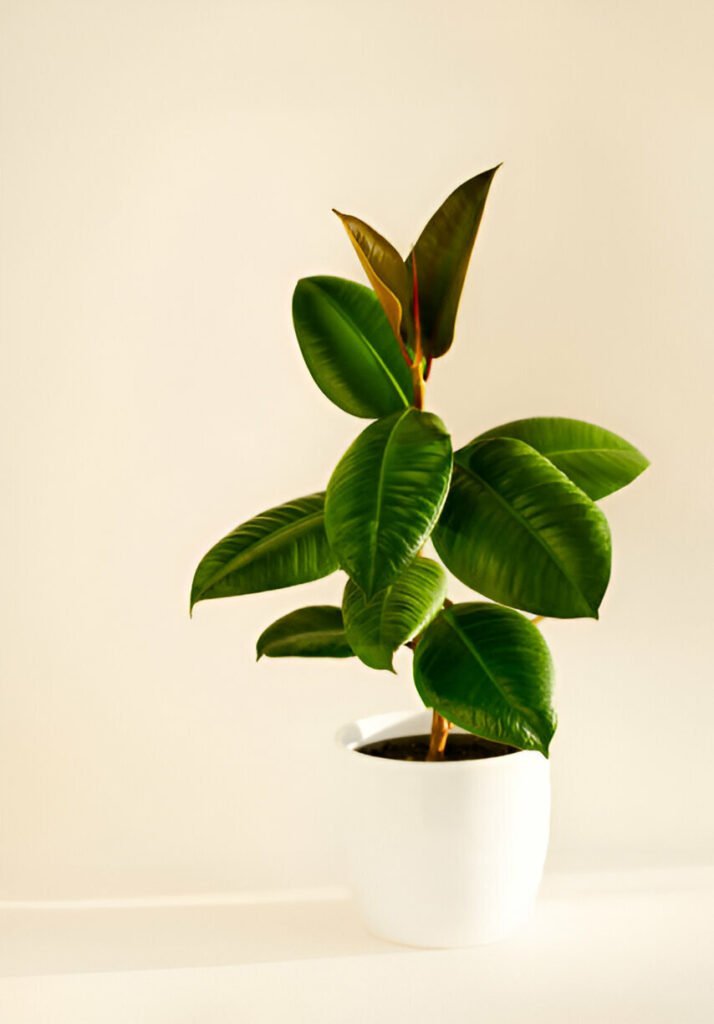
Rubber Plant Care And Tips Guideline
The rubber plant will not worry you. They will give you a significant discount on care. They will be happy if you take time out of your busy life to do some simple care for them. They will not complain to you.
Tub Selection
Rubber plants do not like excess water, so select a tub that does not collect water and has at least one decent-sized hole in the bottom. I recommend clay pots as tubs. Clay pots absorb excess water and drain through drainage holes. However, with modern technology, gardeners mostly use plastic and ceramic tubs indoors. These tubs are colourful and available at your nearest nursery. Select a tub one or two inches larger than the pot the plant is currently in so that the roots of the rubber plant can grow.
Best Soil Mixer Recipe
Once the tub is selected, we will prepare the medium with proper plant nutrients. Rubber plants need a medium with good drainage and aeration. Let me teach you how to make mediums.
- Potting Soil 30%
- Vermiculite 10%
- Coal 35% (three equal amounts together 35%)
- Fertilizer 25%
Take a container and mix the above ingredients well. I will put soil in 1/3 of the tub, and then we will place our rubber plant in the middle. After planting, we will give soil to the remaining bare part and put another 1/1.5 inches of soil above the previous level of the tub. Make sure that there is a place for water to accumulate while watering. Otherwise, the water will run out. You can make potting soil with another ratio, which is more accessible.
- Cocopeat 50%
- Perlite 25%
- Fertilizer 25%
With the above ratio, you can prepare soil for rubber plants. Once the soil is ready and the plant is set up in the tub, we water the plant medium with our home watering can.
Water Requirements
We have to water the rubber tree with caution. We should not keep the plant over-watered or under-watered as it can cause significant damage to the plant. We can easily water them every 1-2 weeks. While watering, we will put our fingers into the soil up to 3 inches. Don’t water the soil if it’s wet. If you have a moisture meter at home, test it. Insert the moisture meter around the tub’s soil to see if it is dry. Water the rubber plant every 1-2 weeks during the summer season. Watering can be done once a month during the winter season. The weather in your area plays a vital role in watering.
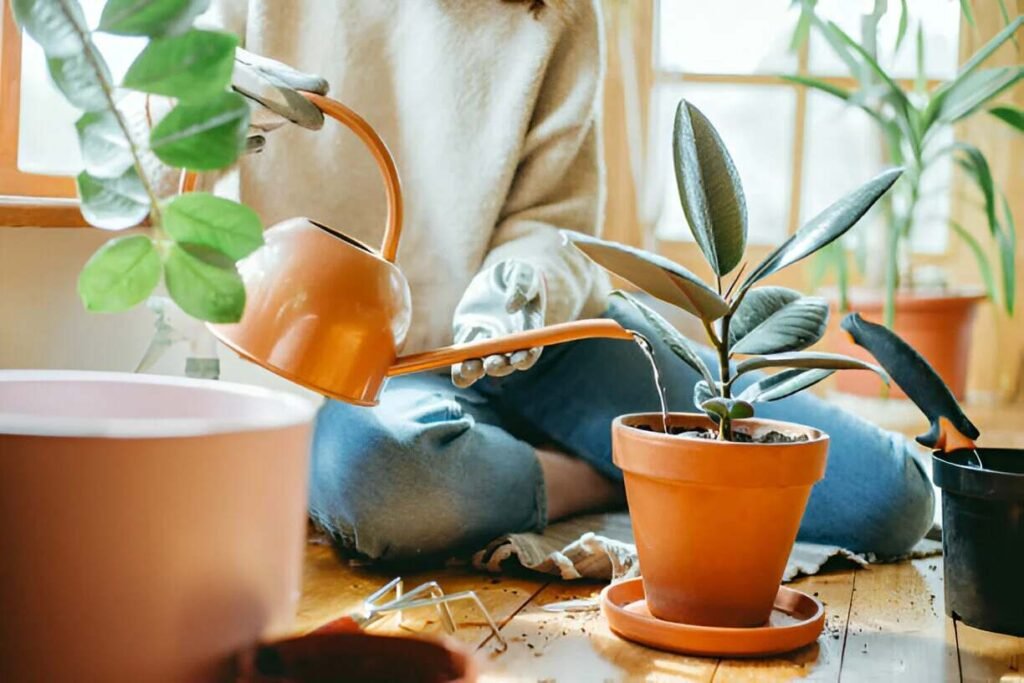
Underwatering
If the plant is not watered at the right time, the leaves of the plant will droop, turn brown, and develop brown spots. On the one hand, this is a good sign that plants are telling us their water is low, giving us the signal “water me”. If we always observe the leaves of the tree, then we can easily catch any problem of the tree.
Light Needed
You can place them anywhere in the room, but they perform best near a south-facing window. In the morning, they are pleased in indirect bright light. We try to keep them away from direct sunlight. We can keep the plant one or one and a half feet away from the window. They are suitable for USDA zones 10-12 (outdoor), where the climate is warm and humid year-round.
Temperature
Rubber plants require 60°-85°F (15°-30°C). Be careful not to drop below 60°F.
Humidity
They can adjust to the natural humidity of your home. You won’t need to add extra moisture.
Fertilizer
Feed the rubber plant during its growing period so that the plant’s roots can collect more food. Fertilize in spring and summer and continue to fertilize in fall and winter. You can use NPK fertilizer, which provides plant micronutrients. It dramatically improves your plant’s roots, new buds, and overall growth. You can apply nitrogen, potassium, phosphorus, and combined NPK-balanced fertilizer.
Tend To Rubber Plant Leaves
Dust accumulates on the plant’s leaves. Clean the dust regularly. Take a paper towel and hold the underside of the wet leaf with one hand so that it doesn’t break under pressure while wiping it with the paper towel. Gently wipe the leaves with a paper towel. First, wipe the upper leaves, then wipe the lower leaves. Removing the dust will allow the leaves to breathe correctly and look shiny and clean.
Best Time To Reporting Rubber Plant?
Rubber plants grow very slowly. Repotting can be done once every 1.5-2 years. When repotting, select a larger pot than you currently have. If your current pot size (which contains the rubber plant) is 5 inches, set the plant to a 6-inch pot when repotting. That will give the rubber plant more room to grow its roots. Air pockets in the soil will allow the plant to breathe more, helping the plant’s roots grow. And if the tree’s roots grow, the tree can receive food with the help of more roots. Thus, the growth of the plant increases. Do not use the previous potting mix when repotting. Create a new potting mix and use that.
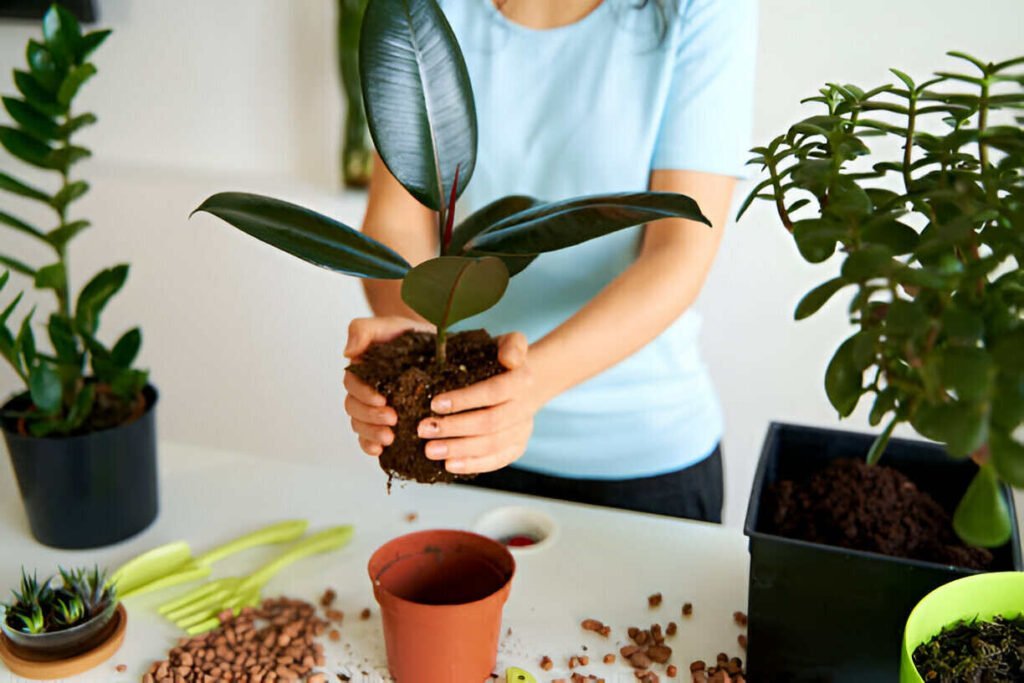
Propagation Rubber Plant
There are two ways to propagate rubber plants. There isn’t another method available. If you know, please let us know. The first is Leaf Cutting, and the second is Stem Cutting. Those old gardeners know about these methods, but I am explaining to those new ones. Leaf-cutting is the propagation of cuttings with the leaf node part. Stem cutting is a method of producing seedlings from mature stems. We ran a small experiment to determine which method is the fastest and yields 100% seedling success. We have tried leaf cuttings and stem cuttings in perlite and water.
How I cut the cutting
It would help if you used a sharp knife or scissors to cut. I have used scissors. I have cleaned it with rubbing alcohol so that there are no germs. While doing leaf cutting, I cut the leaf with a node at 1 or 2 cm. If you look at the rubber plant where the leaf joins the branch, you will see a round dark spot called the plant node (like in Pothos trees). While stem cutting, we will take mature stems and avoid young stems. We will cut a branch at 4/5 inch during stem cutting of the rubber tree and must cut with a scissor at a 45° angle while cutting. When we cut, we will wipe the rubber tree with a cloth or tissue. Then, we will soak the leaves and branches with the nodes in water for a few hours; the latex will dry, and the plant will not rot. We try to plant seedlings through perlite and water to test. We don’t have one-time cups, so we split them into two. If we count the seeds like this, it will be easier for you to understand.
Leaf-cutting
Perlite 1 {covered with plastic mulch}
Perlite 2 {not covered with plastic mulch}
Water 1 {covered with plastic mulch}
Water 2 {not covered with plastic mulch}
Stem cutting
Perlite 1.1 {covered with plastic mulch}
Perlite 2.2 {not covered with plastic mulch}
Water 1.1 {covered with plastic mulch}
Water 2.2 {not covered with plastic mulch}
We only cut the leaf cuttings planted in perlite and water along the middle of the leaf. At the time of stem cutting, we put the top leaves on the 4/5-inch stem, and we separated the lower part of the stem where there were few leaves because we cannot give it with leaves in water or perlite; we will only provide the stem. Covering with plastic polythene retains moisture and determines whether seedlings can be planted without humidity. We observe roots in cuttings placed in perlite and water at around 60-65 days. Now it’s time to give you great information. We noticed that the cuttings we grew in perlite and were not covered with polyethene had roots that were 2.5 inches to 3 inches. And the root only came in 1 or 1.5 inches of water. Another fact is that the growth of seedlings from stems obtained from stem cutting is almost double that of leaf cuttings. I recommend keeping the humidity at home for proper cutting. There is no need to cover it with plastic polythene. Of course, you can try planting in perlite, and you will be 100% successful.
Can a rubber plant be called a low-maintenance plant?
The rubber plant is excellent in one word. You can gift this tree to anyone. Even someone who has never nurtured a tree will find killing difficult. They don’t expect much care from you and won’t in the future. They remove harmful toxins from the air. Keep at least one rubber plant in your home.
Indoor Vs Outdoor
Ever since the rubber plant became known as a houseplant, this plant has become one of the most important reasons for gardeners. Indoors, they can grow to 6-10 feet or 2-3 meters. Outdoors, they are seen to be 25-30 feet. Again, it is up to 60-100 meters. Indoors, they rarely flower or fruit, but they do flower and fruit in nature. Some rubber plants are found as epiphyte plants in nature, and they harm the host.
Rubber plant toxins?
The latex from cutting down rubber trees is toxic to your minor children and pets. It is better to keep rubber plants away from them.
Latex
The rubber plant’s body is covered in a white substance called latex. The dark pods can irritate the skin or eyes, and ingestion can lead to diarrhoea and vomiting.
Benefits of Rubber Plant
The rubber plant removes toxins from your home and plays a significant role in air purification. It controls the room’s temperature and increases the amount of oxygen. Touching the plant does not cause allergic problems. The rubber tree is known as a low-maintenance tree. It will increase the room’s beauty several times. Growing is easy, and even a small child can take care of it.
FAQ
How long will I check if my rubber tree is root-bound?
= You can check once every spring.
2. Need a rubber tree supporter?
= Rubber trees grow tall indoors, and attaching a supporter to the tall branches, the tree is not likely to lean or break in the wind.
3. How many hours of light do rubber plants need?
= They can be kept in bright, indirect light for 3-5 hours in the morning.
4. How do I encourage my rubber tree to produce pink leaves?
= You need to give the plant more light. Plant in bright sunlight. I hope it will be alright.
5. The rubber plant leaves are falling; what should we do now?
= There is nothing to worry about. It is giving you the message to keep the light on. You know the plant by bright light. If it is winter, then the chance of sunlight is meagre. You can grow lights.
6. My rubber tree keeps getting taller. What can be done to grow stalks?
= Cut a branch 6-10 inches from the top of the rubber plant and allow it to sprout. The main tree will start to bush out with new shoots, and you will get another seedling as a bonus.
